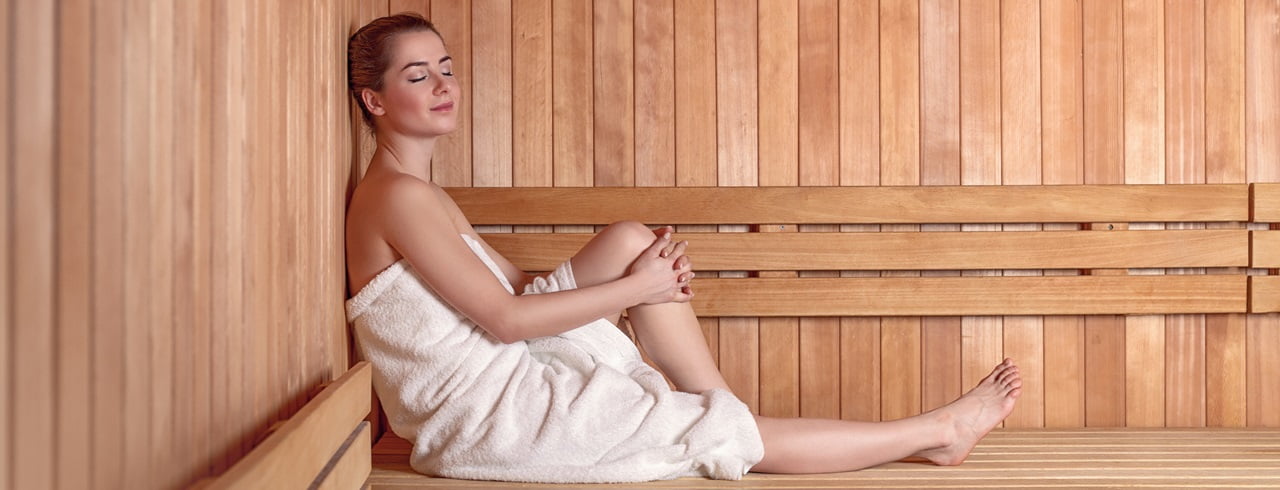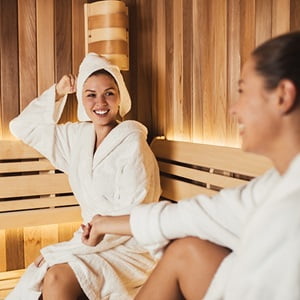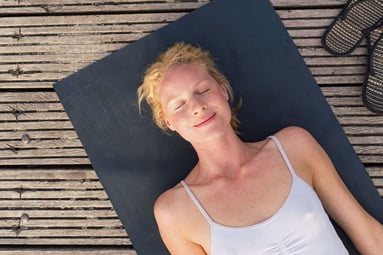
Fit through sauna sessions
As temperatures drop, many people find that having a sauna is a good way to boost their immune system. Working up a sweat in the sauna has numerous health benefits. Here you can find out about the effects, what you need to watch out for, and what the alternatives are.
In Finland, saunas have an important social function that dates back to the Middle Ages, and for many Finns working up a sweat each week is part of daily life. The reason for this is that saunas are known to have a relaxing and healthful effect that boosts circulation and detoxifies the body when taken regularly. Exposing the body to high temperatures will dilate the blood vessels, causing the blood to move through the body more quickly and increase the flow of oxygen to the heart and muscles. By breathing in warm air you will also increase the production of antibodies in the mucus membranes and stimulate the immune system. Furthermore, exposing yourself to warmth will counter the effects of daily stress and help you to recover mentally.
 You can fully benefit from working up a sweat only if you combine it with a cooling effect in between. Hitting the fresh air afterwards will cool the lungs and increase the oxygen levels of the blood, while pouring cold water over yourself or taking a cold shower or bath after a sauna will cause your blood vessels to contract again, thus stabilising your circulation and lowering your heart rate.
You can fully benefit from working up a sweat only if you combine it with a cooling effect in between. Hitting the fresh air afterwards will cool the lungs and increase the oxygen levels of the blood, while pouring cold water over yourself or taking a cold shower or bath after a sauna will cause your blood vessels to contract again, thus stabilising your circulation and lowering your heart rate.
The ideal effect in strengthening yourself is achieved by taking a sauna once a week, whereby each session should be at maximum 15 minutes, but repeated two to three times. Between sessions it is recommended that you take breaks outdoors of 10 to 15 minutes each, followed by a cold shower, and then go back into the sauna. Failing to do so will delay sweating unnecessarily. It is important to remove all makeup before you enter the sauna so that your skin can breathe freely. While taking a sauna, the body gets rid of up to two litres of fluids through the skin, so it’s essential that you drink lots of fluids again afterwards.
*Click here for details of the contribution.
07.12.2022
Proper use of the sauna
 You can fully benefit from working up a sweat only if you combine it with a cooling effect in between. Hitting the fresh air afterwards will cool the lungs and increase the oxygen levels of the blood, while pouring cold water over yourself or taking a cold shower or bath after a sauna will cause your blood vessels to contract again, thus stabilising your circulation and lowering your heart rate.
You can fully benefit from working up a sweat only if you combine it with a cooling effect in between. Hitting the fresh air afterwards will cool the lungs and increase the oxygen levels of the blood, while pouring cold water over yourself or taking a cold shower or bath after a sauna will cause your blood vessels to contract again, thus stabilising your circulation and lowering your heart rate.The ideal effect in strengthening yourself is achieved by taking a sauna once a week, whereby each session should be at maximum 15 minutes, but repeated two to three times. Between sessions it is recommended that you take breaks outdoors of 10 to 15 minutes each, followed by a cold shower, and then go back into the sauna. Failing to do so will delay sweating unnecessarily. It is important to remove all makeup before you enter the sauna so that your skin can breathe freely. While taking a sauna, the body gets rid of up to two litres of fluids through the skin, so it’s essential that you drink lots of fluids again afterwards.
Alternatives to the sauna
Going to the sauna is not a good idea for anyone who is sick or suffers from asthma, vein problems, high blood pressure, or a weak heart. Alternatives to consider include taking hot and cold baths (e.g. such as "Kneipp treatments" according to Sebastian Kneipp) where you sit in a hot tub (37 to 39 degree Celsius) for three to five minutes, and then switch to a short cold tub for only 10 to 20 seconds immediately afterwards. You should repeat switching between hot and cold three times, and always start in the hot tub and finish in the cold one. At home, you can apply the same principle by taking cold showers after sitting in a hot tub.Relaxation and wellbeing
Did you know that under the COMPLETA FORTE, COMPLETA PRAEVENTA and OPTIMA supplementary insurance plans SWICA contributes up to 900 francs* towards preventive healthcare relating to relaxation and wellbeing? More information at: swica.ch/wellbeing*Click here for details of the contribution.
07.12.2022
In the event of further health-related questions, SWICA customers can contact the santé24 telemedicine service free of charge on +41 44 404 86 86. A telemedicine practice licence allows santé24 physicians to provide additional medical services in cases that are suited to a telemedicine approach. SWICA customers can also use the BENECURA medical app to carry out a digital SymptomCheck and receive recommendations about what to do next. During a subsequent phone call with santé24, customers can decide for themselves whether to release their information from SymptomCheck to santé24.







